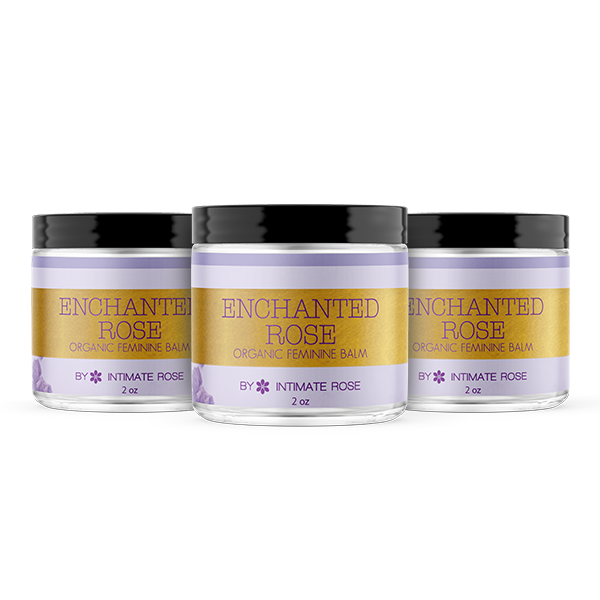When considering Menopause Hormone Therapy (MHT), women are encouraged to understand the benefits it provides for bone health and its ability to prevent osteoporosis, as well as ease menopause symptoms.
Although incorrectly interpreted results from an older study suggested the risks of MHT outweighed the benefits, the opposite has since been proven. With minimal risks for most women, MHT is now more widely recognized for its help throughout menopause than ever before.
This article explains how the body naturally maintains bone health, why it changes with a decline in estrogen production, what MHT can do to improve bone density, and how it prevents the onset of osteoporosis.
What is Osteoporosis?
Osteoporosis, meaning ‘porous bone’, is a disease caused by a loss of too much bone density, a lack of bone formation, or a combination of both. It is known as a silent disease because it happens gradually with age and people don’t typically notice their bones weakening until fractures occur.
Healthy and dense bone under a microscope appears similar to a honeycomb with holes and spaces throughout. With osteoporosis, however, the holes are much bigger due to a loss of bone density, causing bones to weaken and fracture or break more easily.
In addition to pain, less mobility, and reduced flexibility, osteoporosis can affect posture when the spinal vertebrae are affected, resulting in a stooped or hunched stance.
People over 40 who have recently broken a bone, particularly women experiencing menopause symptoms, are advised to schedule a bone density test with their healthcare provider to assess their bone health.
Understanding Bone Health and Bone Remodeling
Just like any other body part, bones are living tissue. They are made of protein, minerals, and several vitamins; some bones also contain bone marrow. Through a cellular process known as bone remodeling, old or damaged bone tissue is continually broken down throughout life and replaced by new bone tissue to keep bones strong and adequately flexible.
Although research into the process of bone remodeling is ongoing, it is believed to occur in three phases, involving three types of bone cells - osteoclasts, osteoblasts, and osteocytes - as well as support from a collection of proteins and hormones.
Osteocytes are believed to control bone health by sensing damaged bone tissue, triggering the remodeling process, and coordinating osteoclast and osteoblast activity.
During the first phase of bone remodeling, known as resorption, osteoclasts digest old or damaged bone. Reversal is the second phase, where mononuclear cells formed on the bone surface are believed to behave as precursor cells and osteoblast stimulators. Formation is the third stage, during which osteoblasts create new bone until the resorbed bone from the first phase is entirely replaced.
During childhood and puberty, new bone tissue is produced faster than old bone tissue to maintain bone strength and promote growth. However, bone remodeling typically peaks in the late 20s, and afterward, old bone tissue tends to break down faster than new tissue is made.
This slower bone remodeling process associated with aging can result in loss of bone density, weaker bones, more bone fractures, and the onset of osteoporosis.
Another factor known to contribute to the loss of bone density is the onset of menopause.
How Does Menopause Affect the Bones?
Perimenopause, which typically begins in the mid to late 40s and lasts anywhere from 7 to 12 years signals a decline in the production of the sex hormones estrogen and progesterone. As the production of these hormones starts to decline, symptoms such as hot flashes, irregular menstruation, low libido, vaginal dryness, and mood swings are common.
However, while estrogen and progesterone are mostly known for supporting the reproductive system, these hormones also contribute to many other body systems.
For example, the heart, brain, skin, and bones are all supported in one way or another by estrogen, while sleep and energy levels are boosted by progesterone. Therefore, when estrogen and progesterone production declines with the onset of menopause, all of the above can be affected too.
How Estrogen Supports the Bones and Why It’s Important During Menopause
Extensive evidence has established that estrogen is a vital regulator of bone growth in women and men due to its support for osteocyte, osteoblast, and osteoclast activity. In this capacity, estrogen helps control resorption (breakdown of old bone tissue), aids formation (creation of new bone tissue) and binds to estrogen receptors to maintain bone density (bone strength).
Therefore, a decline in estrogen production during the menopause transition can increase bone resorption and decrease bone formation. Added to an already-slowed bone remodeling process due to aging, low estrogen levels can accelerate the loss of bone density and create a higher risk of developing osteoporosis postmenopause.
Research also shows that women who begin the menopause transition earlier than usual are at an even higher risk of developing postmenopausal osteoporosis than women who start perimenopause in their mid to late 40's.
This increased risk is largely contributed to the early decline in estrogen levels.
How Can MHT Help Prevent Osteoporosis?
Menopause hormone replacement therapy, which contains estrogen and progesterone, or only estrogen, is administered to rebalance hormone levels in the body. In addition to relieving menopause symptoms, supplemented estrogen at this time of life also helps prevent a loss of bone density by balancing the process of bone resorption and bone formation.
Indeed, several studies have shown that MHT can prevent loss of bone density, improve bone growth, and reduce bone fractures by up to 50%.
Even for women who have previously experienced a loss of bone density due to aging, or already have osteoporosis, MHT can still help strengthen bones and prevent future fractures.
Another positive aspect of taking MHT for osteoporosis is that it doesn’t cause indigestion like bisphosphonates - the traditional medication for improving bone density.
Hormonal and Non Hormonal Menopause Relief

Is MHT Safe?
Yes, MHT is a safe and effective method of treating menopause symptoms with the risks nowhere close to what was previously suggested. In fact, results from older studies that suggested MHT could increase the risk of breast cancer, heart disease, and clots in all women have since been proven either incorrect or poorly interpreted.
For example, subsequent studies into the increased risk of breast cancer when taking MHT have proven that the risk is much smaller than previously reported with only a 2% difference between those who don’t take MHT and those who do. Given that drinking alcohol more than three times per week is linked to a 15% increase in the risk of breast cancer, the risk associated with MHT is minimal.
In the 1970s, it was discovered that estrogen-only therapy was associated with an increase in the risk of endometrial cancer. However, subsequent studies proved that adding progesterone to estrogen therapy could protect the uterine lining from endometrial cancer.
This led to a global understanding that women with a uterus are always prescribed combined hormone therapy (estrogen and progesterone). Whereas, women who have undergone a hysterectomy (the surgical removal of the uterus) can safely take estrogen-only therapy.
Updated research also ruled out the risk of clotting in women taking MHT with no previous incidents of clots. Additional data revealed that MHT doses and administration methods can even be adapted to treat women with a history of clotting.
Today, MHT is recognized as one of the best methods of treating menopause symptoms when the correct type of hormone therapy is prescribed for each individual’s circumstances. In addition, it is considered a preventative measure against bone density loss and osteoporosis caused by low estrogen levels. It is also known to support cardiovascular health and prevent the loss of muscle mass.
How to Start MHT?
To ensure the right type of MHT is prescribed for each person, those considering MHT are advised to schedule an appointment with a gynecologist, or menopause expert for evaluation. Menopause symptoms, overall health, medical history, uterus status, and the current stage of your menopause journey are important factors for healthcare providers to consider before prescribing MHT.
Hormone therapy for menopause can be administered as pills, patches, gels, creams, sprays, rings, or IUDs. Additionally, doses and combinations can be arranged by healthcare providers to cater to the needs of all women transitioning through menopause.

Get your personalized HRT plan!

Get your personalized HRT plan!
Additional Ways to Keep Bones Healthy During Menopause
Ensuring your diet includes adequate amounts of calcium can help fortify bones and if you live in a colder climate a vitamin D supplement can help the body absorb calcium. Eating a well-balanced and nutritious diet of protein, fiber, fruits, vegetables, seeds, and healthy fats can also benefit bone density and the menopausal body in many ways.
Exercise is also a proven way to keep the bones strong and healthy. For women transitioning through menopause, a mixture of aerobic exercise (for cardiovascular health), strength training (to encourage bone growth), and yoga or Pilates (for balance and flexibility) is advised.
Conclusion
As aging progresses, the rejuvenation of new bone tissue, known as bone remodeling, begins to slow down. Because the process of bone remodeling is also supported by estrogen, women transitioning through menopause often experience a loss of bone density as a symptom of declining estrogen levels.
Losing bone density can result in more bone fractures and the gradual onset of osteoporosis. For women aged 45 and over, MHT is highly recommended to counteract this decline in bone health and prevent osteoporosis.
When considering using MHT, it’s important to discuss your symptoms, menopause journey, overall health, and medical history with a healthcare provider. Taking each into consideration means the safest and most effective hormone therapy can be prescribed for your symptoms and health requirements.
References
Cleveland Clinic - Bones - https://my.clevelandclinic.org/health/body/25176-bones
National Library of Medicine - Bone Remodeling - https://pubmed.ncbi.nlm.nih.gov/17308163/
Royal Osteoporosis Society – What’s Menopause Got to Do with Bone Health - https://theros.org.uk/blog/2021-03-22-what-s-the-menopause-got-to-do-with-bone-health/
National Library of Medicine – Estrogen and the Skeleton - https://pmc.ncbi.nlm.nih.gov/articles/PMC3424385/
National Library of Medicine - Hormone replacement therapy and the prevention of postmenopausal osteoporosis - https://pmc.ncbi.nlm.nih.gov/articles/PMC4520366/

Get your personalized HRT plan!












